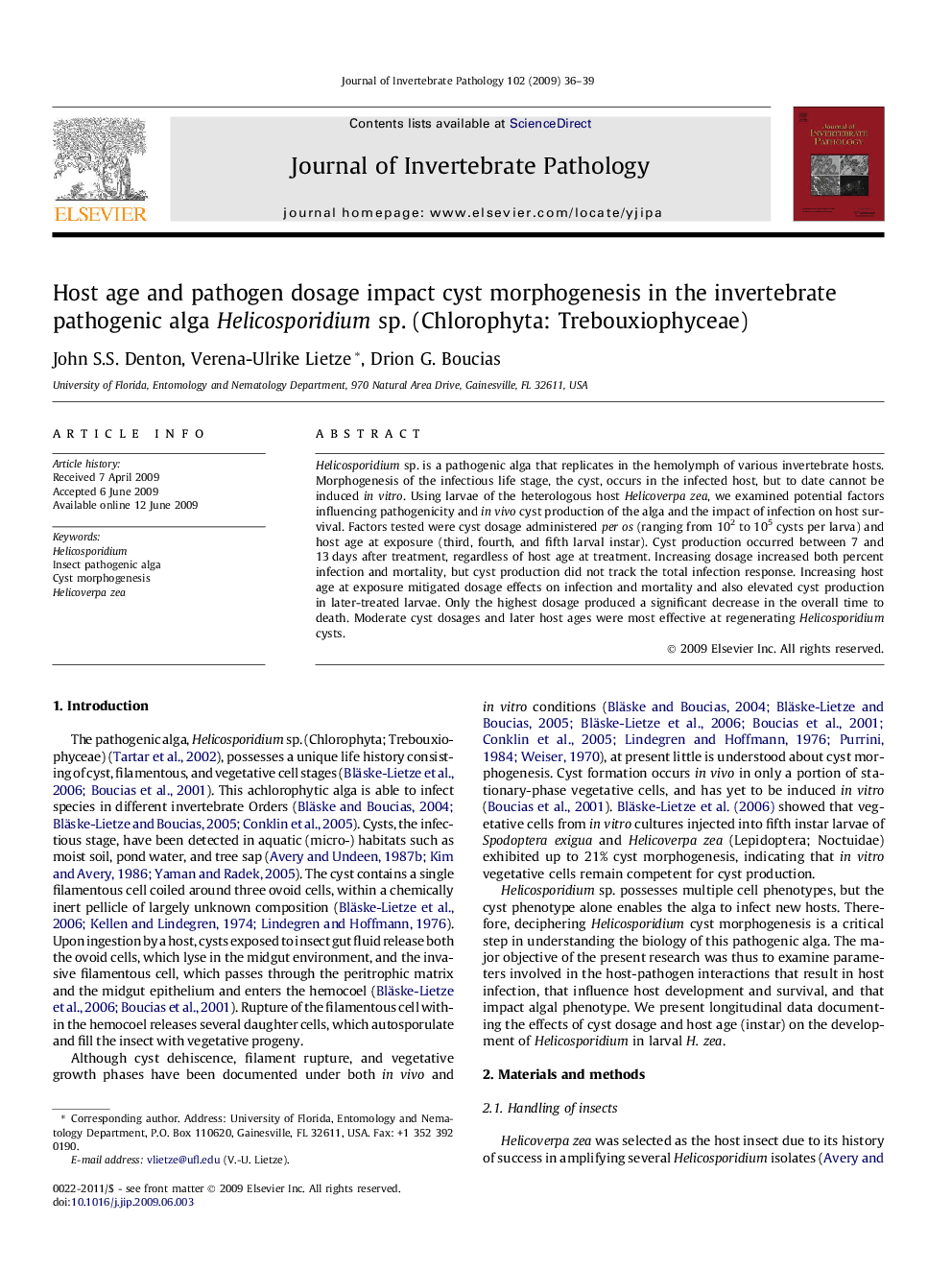| Article ID | Journal | Published Year | Pages | File Type |
|---|---|---|---|---|
| 4558067 | Journal of Invertebrate Pathology | 2009 | 4 Pages |
Helicosporidium sp. is a pathogenic alga that replicates in the hemolymph of various invertebrate hosts. Morphogenesis of the infectious life stage, the cyst, occurs in the infected host, but to date cannot be induced in vitro. Using larvae of the heterologous host Helicoverpa zea, we examined potential factors influencing pathogenicity and in vivo cyst production of the alga and the impact of infection on host survival. Factors tested were cyst dosage administered per os (ranging from 102 to 105 cysts per larva) and host age at exposure (third, fourth, and fifth larval instar). Cyst production occurred between 7 and 13 days after treatment, regardless of host age at treatment. Increasing dosage increased both percent infection and mortality, but cyst production did not track the total infection response. Increasing host age at exposure mitigated dosage effects on infection and mortality and also elevated cyst production in later-treated larvae. Only the highest dosage produced a significant decrease in the overall time to death. Moderate cyst dosages and later host ages were most effective at regenerating Helicosporidium cysts.
